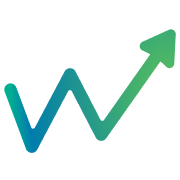Everyone Starts Their Investment Journey with DEGIRO – But What Does It Actually Cost?
4/22/2025

Laurens van Dijk
Self-taught investing guru
When you start investing, there are suddenly many decisions to make. Which ETF should you choose? How much risk do you want to take? And, importantly: which broker should you use? In the Netherlands, it seems like almost everyone who starts investing ends up at DEGIRO. And that’s no surprise, because DEGIRO scores well on several key aspects:
- Low costs
- Simple app
- High ranking in Google
- Trust through word-of-mouth
We—Bas and I—also started with DEGIRO. It felt logical: cheap, well-known, and easy to use. But how cheap is cheap, really? In this article, we take a deep dive into the costs you incur when investing through DEGIRO.
Why Are Costs So Important?
At first glance, you can neglect costs - a few euros here, a percentage there. But small costs can make a big difference over time due to something called compounding, or the interest-on-interest effect.
Imagine you invest €10,000 and achieve an average 6% annual return. After 30 years, you would have €57,400. However, if you pay 1.5% in annual fees, you won’t end up with €57,400—but rather €38,000. That’s almost €20,000 lost to costs alone.
💡 At Watkostbeleggen.nl, we focus on precisely this insight: understanding how costs impact your returns and how to make smarter choices.
What Costs Do You Incur When Investing with DEGIRO?
DEGIRO has a transparent fee structure, but that doesn’t mean it’s always easy to understand. You encounter various types of costs depending on what you buy.
To give a clear picture, we analyze three popular investment products and how costs work at DEGIRO:
- LYXOR STOXX Europe 600 (LU0908500753) – a broadly diversified European ETF. Part of the core selection, meaning no transaction fees under the right conditions. Chosen because it is accumulating, meaning dividends are reinvested.
- Vanguard FTSE All-World (IE00B3XXRP09) – a global ETF, popular due to its broad exposure across markets. Also part of the core selection, but distributes dividends, which means dividend tax applies.
- Heineken N.V. (Euronext Amsterdam) – a popular Dutch stock, included to show how costs differ between individual stocks and ETFs.
Below, we break down the main cost components—with real examples.
Transaction & Handling Fees
For most ETFs and stocks, you pay fixed transaction fees per trade. Transaction fees are charged by DEGIRO to execute an order on the stock exchange, while handling fees are a small extra cost per transaction.
These fees are standard at most brokers, but DEGIRO stands out by offering a core selection of ETFs, where under certain conditions, you only pay a €1 handling fee and no transaction fees. This can make a big difference, especially for regular investors.
📌 Examples:
- Accumulating ETF (LYXOR STOXX Europe 600 - LU0908500753)
- Part of core selection → €1 handling fee, no transaction fees
- Distributing ETF (Vanguard S&P500 - IE00B3XXRP09)
- Part of core selection → €1 handling fee, no transaction fees
- Individual stock (Heineken N.V. - Euronext Amsterdam)
- €2 transaction fee + €1 handling fee
Currency Conversion Costs
If you buy a stock or ETF in a foreign currency, DEGIRO charges currency conversion fees. This happens when euros are converted to, say, U.S. dollars. DEGIRO’s standard automatic conversion fee is 0.25% of the amount. Alternatively, you can manually convert at DEGIRO’s Active rate (€10 + 0.03%), which may be cheaper for larger amounts.
These fees aren’t unique to DEGIRO—almost every broker charges for currency conversion.
📌 Examples:
- LYXOR STOXX Europe 600 → Listed in euros → No currency costs
- Vanguard S&P500 → Listed in USD → 0.25% conversion fee
- Heineken N.V. → Listed in euros → No currency costs
💡 Tip: If possible, choose a euro-denominated ETF, so you avoid conversion fees.
Exchange Fees (Connectivity Costs)
Investing in stock exchanges outside the Netherlands or Belgium? DEGIRO charges a €2.50 annual fee per exchange. These fees exist across many brokers, though some may waive them.
📌 Examples:
- LYXOR STOXX Europe 600 → Listed on Euronext Paris → No exchange fee
- Vanguard S&P500 → Listed on the London Stock Exchange → €2.50 per year
- Heineken N.V. → Listed on Euronext Amsterdam → No exchange fee
Fund Costs (TER - Total Expense Ratio)
ETFs and mutual funds charge their own fees, known as the Total Expense Ratio (TER). These annual fees cover fund management and administrative costs. They are built into the ETF price, not separately charged.
📌 Examples:
- LYXOR STOXX Europe 600 → 0.07% per year
- Vanguard S&P500 → 0.07% per year
- Heineken N.V. → No fund costs
Dividend Tax
Dividend tax is critical for investors in dividend-paying ETFs or stocks. With accumulating ETFs, dividends are automatically reinvested, meaning no direct tax is visible. However, the issuer location determines how much tax is deducted before reinvestment, which impacts your return.
💡 Tip: ETFs issued in Ireland, Luxembourg, or the Netherlands often have more favorable tax rates than those issued in the U.S.—a consideration for European investors.
📌 Examples:
- LYXOR STOXX Europe 600 (accumulating) → Dividend reinvested → Tax depends on issuer location
- Vanguard S&P500 (distributing) → 15% U.S. dividend tax → Deducted from payout
- Heineken N.V. → 15% Dutch dividend tax
Annual Cost Overview Per Product
Here’s a summary of yearly costs for a €10,000 portfolio, assuming one transaction per month.
Table to come
Conclusion
Investment costs aren’t just set by your broker. Your own behavior matters too—how often you trade, how much you invest, and what you invest in. Our investment cost calculator can offer additional insights.
DEGIRO remains a popular choice, and rightfully so. Especially for beginners investing in ETFs, it’s an affordable and accessible broker. But low-cost doesn’t mean free—understanding where you’re paying helps you make smarter investment choices.
